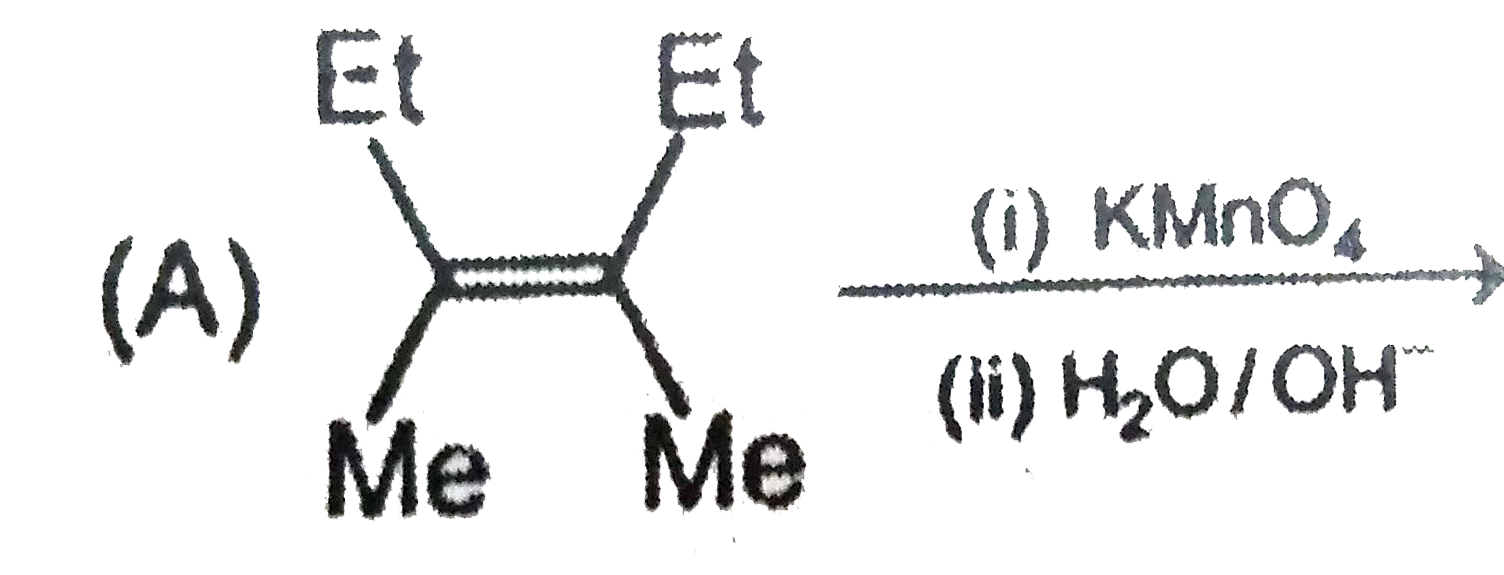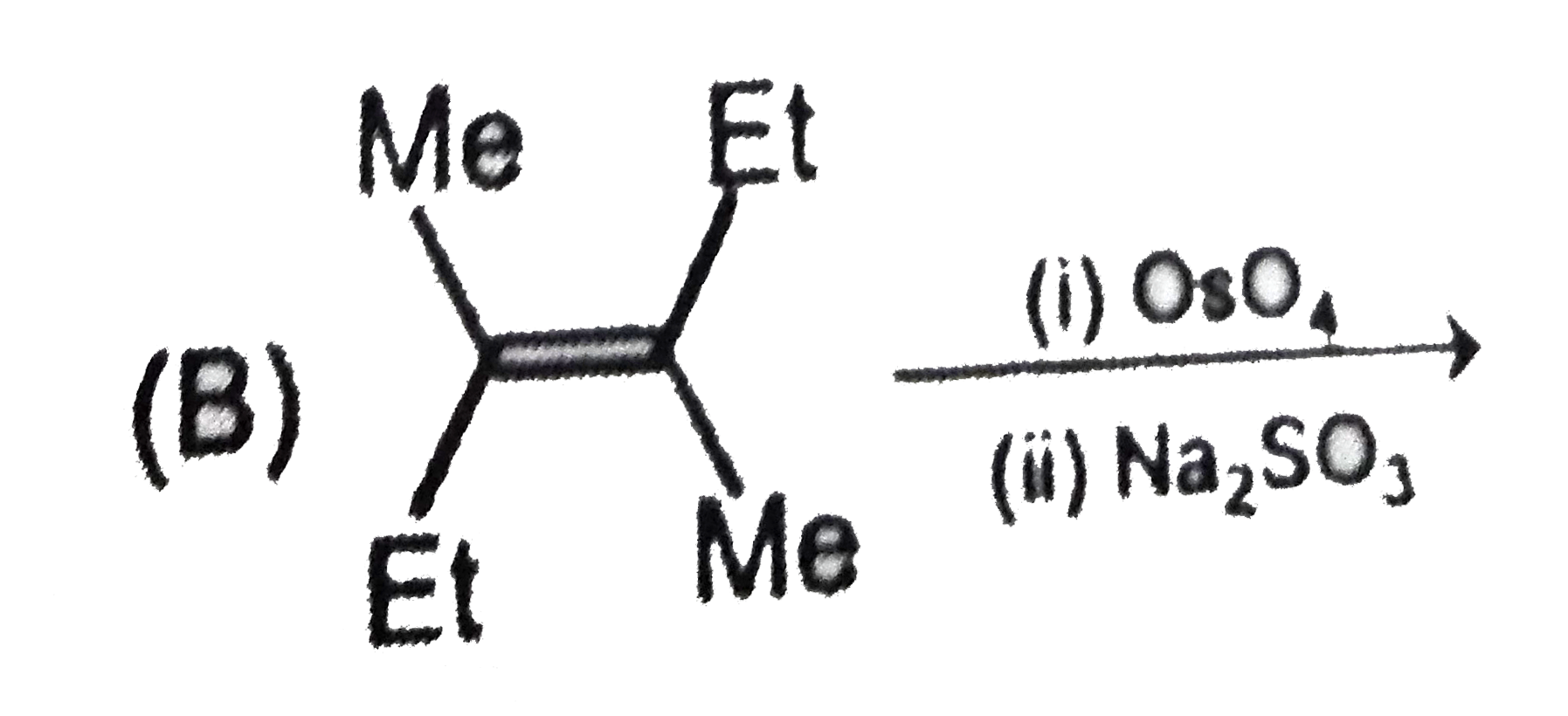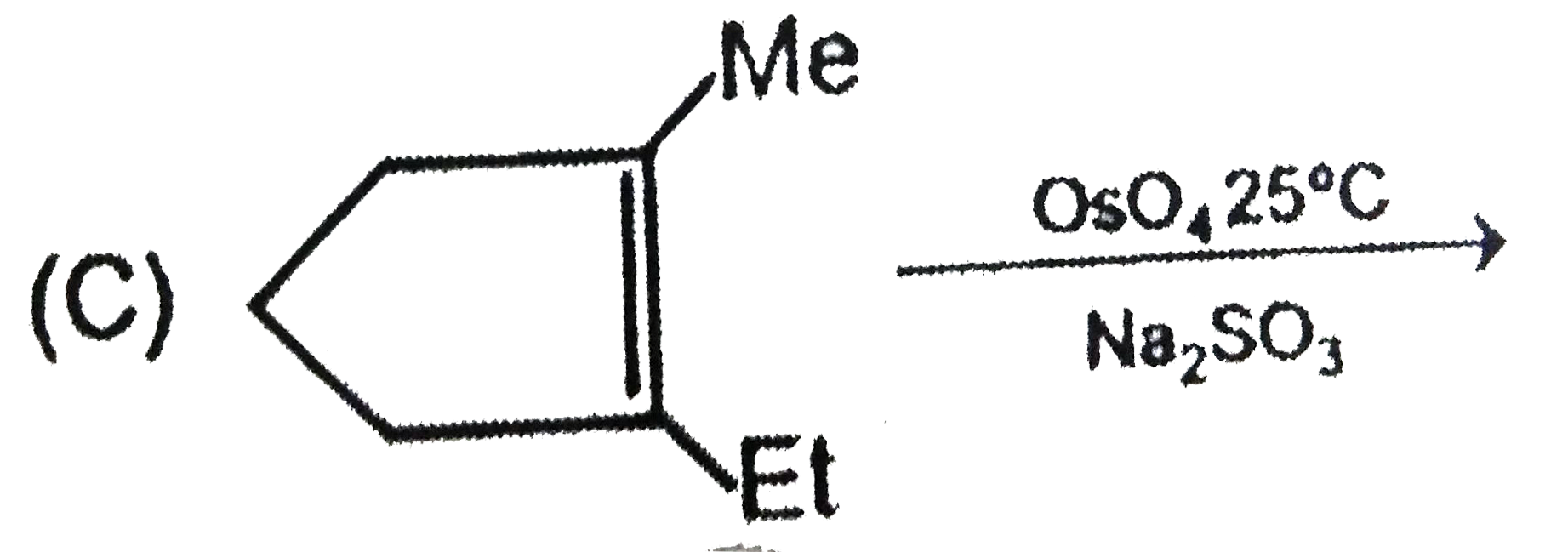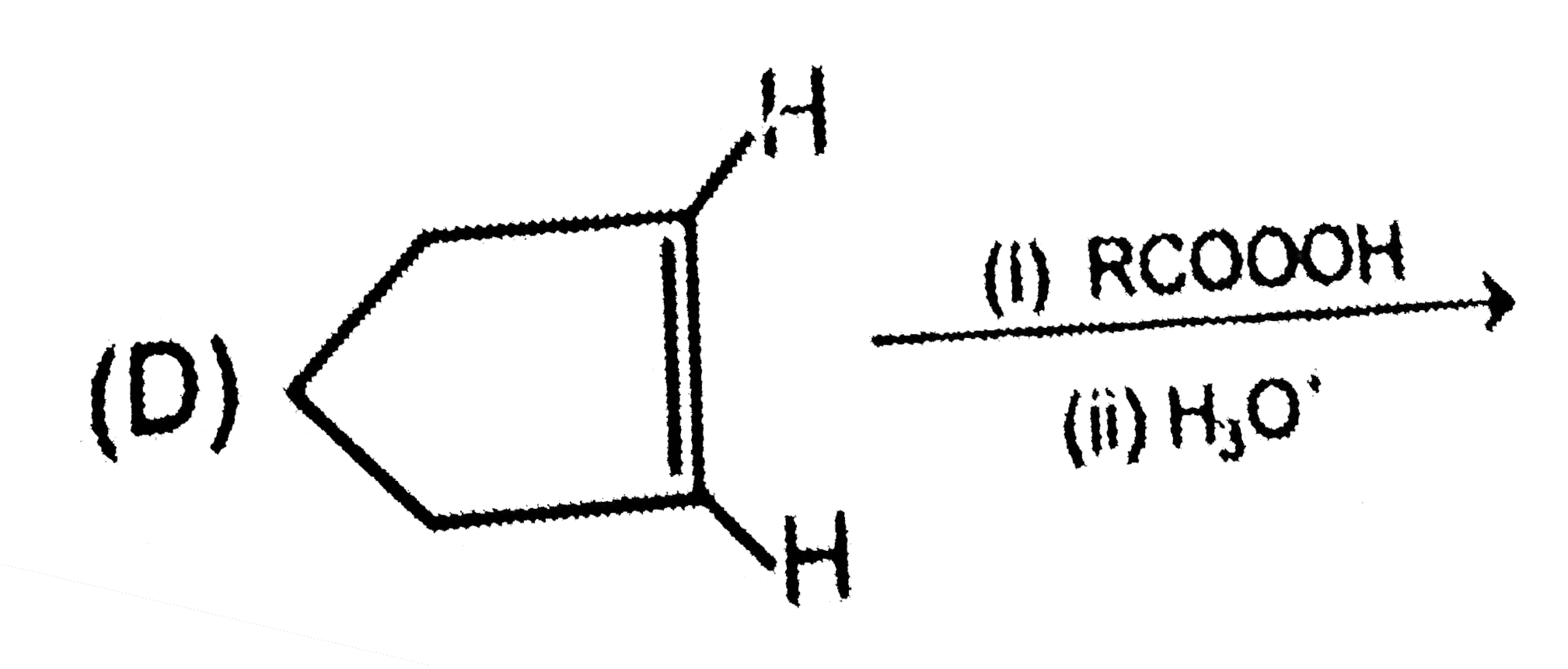Which of the following will not give addition reaction with RMgX?
CO2
CH3−CH2−Br
SO2
CH3−O∣∣C−OH
The correct Answer is:B, D
To determine which of the given compounds will not undergo an addition reaction with RMgX (Grignard reagent), we need to analyze the nature of the compounds in question and how they interact with the Grignard reagent.
1. Understanding Grignard Reagent (RMgX):
- RMgX is a Grignard reagent where R is an alkyl or aryl group, and MgX is a magnesium halide. The R group carries a partial negative charge, making it a strong nucleophile.
2. Identifying the Reaction Type:
- Grignard reagents typically react with electrophiles (electron-deficient species) through addition reactions. The R group will attack an electron-deficient carbon atom, leading to the formation of a new carbon-carbon bond.
3. Analyzing Each Compound:
- A: CO2:
- CO2 has a linear structure with carbon being electron-deficient due to the electronegative oxygen atoms. The R group from RMgX will attack the carbon, leading to an addition reaction.
- B: Ethyl Bromide (C2H5Br):
- Ethyl bromide has a carbon atom bonded to a bromine atom, which is electron-withdrawing. The R group will attack the carbon, but this results in a substitution reaction (R replaces Br) rather than an addition reaction.
- C: SO2:
- Sulfur dioxide is also electron-deficient. The R group can attack the sulfur atom, leading to an addition reaction.
- D: Carboxylic Acid (RCOOH):
- In carboxylic acids, the carbonyl carbon is not electron-deficient enough for the R group to perform an addition reaction. Instead, the R group acts as a base and abstracts a proton (H) from the hydroxyl group, leading to an acid-base reaction rather than an addition reaction.
4. Conclusion:
- The compounds that will not give an addition reaction with RMgX are B (Ethyl Bromide) and D (Carboxylic Acid).
Final Answer:
B and D will not give addition reactions with RMgX.
- RMgX is a Grignard reagent where R is an alkyl or aryl group, and MgX is a magnesium halide. The R group carries a partial negative charge, making it a strong nucleophile.
- Grignard reagents typically react with electrophiles (electron-deficient species) through addition reactions. The R group will attack an electron-deficient carbon atom, leading to the formation of a new carbon-carbon bond.
- A: CO2:
- CO2 has a linear structure with carbon being electron-deficient due to the electronegative oxygen atoms. The R group from RMgX will attack the carbon, leading to an addition reaction.
- B: Ethyl Bromide (C2H5Br):
- Ethyl bromide has a carbon atom bonded to a bromine atom, which is electron-withdrawing. The R group will attack the carbon, but this results in a substitution reaction (R replaces Br) rather than an addition reaction.
- C: SO2:
- Sulfur dioxide is also electron-deficient. The R group can attack the sulfur atom, leading to an addition reaction.
- D: Carboxylic Acid (RCOOH):
- In carboxylic acids, the carbonyl carbon is not electron-deficient enough for the R group to perform an addition reaction. Instead, the R group acts as a base and abstracts a proton (H) from the hydroxyl group, leading to an acid-base reaction rather than an addition reaction.
- The compounds that will not give an addition reaction with RMgX are B (Ethyl Bromide) and D (Carboxylic Acid).
B and D will not give addition reactions with RMgX.
Topper's Solved these Questions
- BOOK - HIMANSHU PANDEYCHAPTER - HALIDESEXERCISE - More Than One Correct (Q.26 To Q.50)25videos
HALIDES
- BOOK - HIMANSHU PANDEYCHAPTER - HALIDESEXERCISE - Linked Comprehension Type (Q.1 To Q.25)25videos
HALIDES
- BOOK - HIMANSHU PANDEYCHAPTER - HALIDESEXERCISE - Level 2 (Q.151 To Q.165)15videos
HALIDES
- BOOK - HIMANSHU PANDEYCHAPTER - GENERAL ORGANIC CHEMISTRYEXERCISE - Subjective Type Problems19videos
GENERAL ORGANIC CHEMISTRY
- BOOK - HIMANSHU PANDEYCHAPTER - ISOMERISMEXERCISE - Subjective Type Problems11videos
ISOMERISM
Similar Questions
Knowledge Check
- Question 1 - Select One or More
Which of the following will give syn addition ?
A B
B C
C D
D
- Question 2 - Select One
Which of the following will undergo addition reactions ?
ACH4BC3H8CC2H6DC2H4 - Question 3 - Select One
Which of the following is not an addition reaction?
ACH3CHO+HCN→CH3CH(CN)OHBCH2=CHCH3+HCl→CH3(Cl)CH3CCH3CH2OH+HBr→CH3CH2Br+H2OD(CH3)2C=oNaHSO3−−−−−→(CH3)2OH∣CSO−3Na+
Which of the following reagents does not give addition reaction with acetylene?
View SolutionWhich of the following is free radical addition reaction ?
View SolutionWhich of the following will give the addition product with NaHSO3 ?
View SolutionWhich of the following compounds give alcohol on reaction with RMgX?
View SolutionWhich carbonyl compound will not give addition reaction with water ?
View Solution

